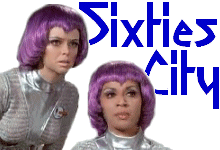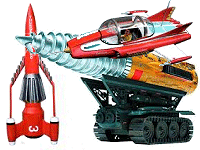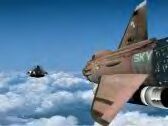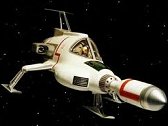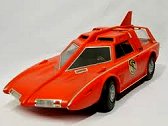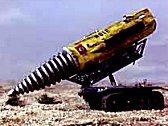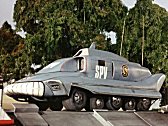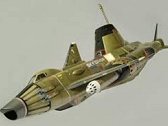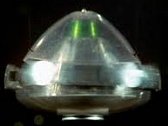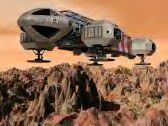| |
|
1966 / 1967 Original Novels
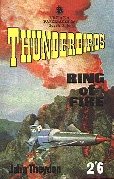 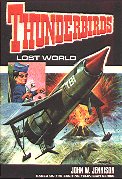 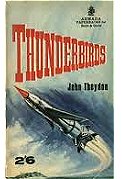 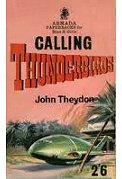
8 original
novels authorised - 4 by Armada in paperback and 4 by World Distributors
in hardback
Paperback - all by John Theydon
'Thunderbirds' 'Calling Thunderbirds'
'Thunderbirds: Ring of Fire' 'Lady Penelope: The
Albanian Affair'
Hardback - Two Authors
'Thunderbirds: Operation Asteroids' by John W.Jennison
'Thunderbirds: Lost World' by John W.Jennison
'Lady Penelope: Cool For Danger' by Kevin McGarry
'Lady Penelope: A Gallery Of Thieves' by Kevin McGarry

1967 - Captain Scarlet and The Mysterons
A Gerry Anderson Production


|
Format
by Gerry and Sylvia Anderson Executive
Producer: Gerry Anderson Produced
by Reg Hill
32 episodes made in two blocks - 12 in 1967 and 20 in 1968
First
transmitted: 1st October 1967
The
Mars landing by Spectrum, Earth's security organisation,
in 2068, ended in the destruction of the Mysteron city.
Mistakenly believing
themselves to be the victims of an unprovoked attack, the
Mysterons swore revenge and during their retaliation attacks,
two Spectrum agents,
Captains Scarlet and Black, are killed and duplicated with
the power to recreate themselves even after death. Captain
Black becomes an agent
for the Mysterons, while Captain Scarlet remains loyal to
Spectrum and leads the fight to protect Earth and Skybase
from the revenge of the
Mysterons and their strange reconstructive powers.
Despite the lyrics of the theme song, it was never the Mysterons'
intention to conquer the Earth.
First
use of properly proportioned puppets and the first series
to use the Century 21 dart before the main title sequences.
Notable for the eerie opening scenes, the main theme tune
played by The Spectrum ( who never appeared as a group
although they released a single entitled 'Samantha is
mine' ) and the 7 note segue used during the 'strobe-shot'
scene changes.
Each episode had a two week shooting schedule but, for
the first 12 episodes, pairs of episodes were shot simultaneously
over a period
of 12 weeks. The remaining 20 episodes were shot back-to-back
with the film 'Thunderbird 6' over a five month period.
In
1967, Century 21 released an additional five Captain Scarlet
adventures as 7-inch vinyl EP records (promoted as "mini-albums")
|

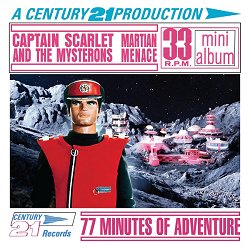
|
See also Bill Harry's 'Captain
Scarlet' page
Season 1 Episode 1     End
theme End
theme
1967 - 1969 Candy and Andy
City Magazines Ltd. / Century 21
Publishing
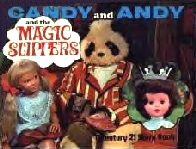  
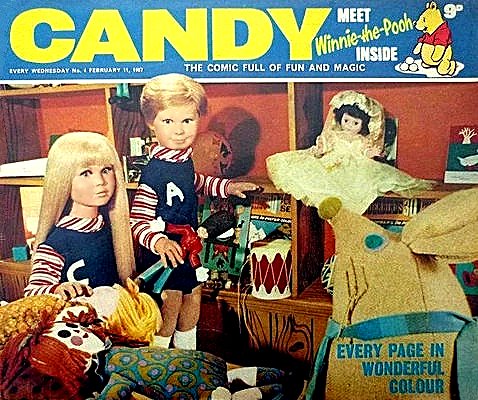
Based
on an idea by Gerry Anderson this was a series of photo stories
about two children that live with Mr and Mrs Bearanda who are Pandas.
The storyline was intended as a TV series
but did not make the screen. The characters were first seen in a
magazine called 'Candy' published by City Magazines Ltd in co-operation
with Century 21 publishing and edited by Alan Fennel.
Gerry Anderson wanted to have a different style of comic strip,
resulting in the characters being photographed rather than drawn.
Issue 1 appeared on 21st January 1967 and ran to issue 154 on 27th
Dec 1969.
Annuals were produced from 1967 to 1969. Story titles included:
Good Deed Day, Rufus To The Rescue, The Magic Slippers, Penny For
The Guy and The Duck Who Could Not Swim.

1967 - Thunderbird 6
Century 21 Cinema / United Artists

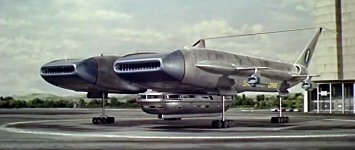 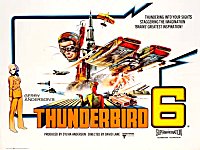 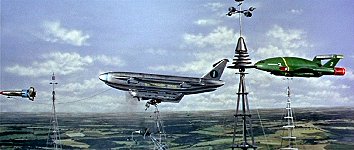
Film - 90 mins Premiere:
29th July 1968 at the Odeon Cinema, London
Executive Producer:
Gerry Anderson Associate
Producer: John Read Producer:
Sylvia Anderson
Director:
David Lane

A
second crack at the big screen for International Rescue. This
time, featuring Lady Penelope aboard the maiden voyage of Brains'
new airship - 'Skyship One'.
It doesn't take long for Lady P to discover that the crew are
imposters, involved in a plot to bring about the downfall of International
Rescue.
Thunderbird
'6' is, in fact, the biplane in the film. The real life pilot
had to appear in court on charges of dangerous flying after filming
the sequence of flying under
a motorway bridge on the then new, unopened, M40 motorway at Lane
End near High Wycombe. The charges were dropped!


1968 - Doppelganger (Journey To The Far Side of the Sun)
Century 21 Cinema
/ Universal

Film - 101 minutes Premiere:October
8th 1969 at the Odeon Cinema, London (June 1969 - U.S.A.)
Produced by
Gerry and Sylvia Anderson Associate Producer:
Ernest Holding Director: Robert Parrish
Written by
Gerry and Sylvia Anderson and Donald James
Starring
Roy Thinnes, Ian Hendry, Lynn Loring, Loni von Friedl and Patrick
Wymark
Following
the discovery of a new planet on the opposite side of the sun,
EUROSEC, the European Space Exploration Centre, send a 2-man probe
to investigate.
The probe crashes, but it takes the crew a while to realise that
it has crashed on a mirror-image duplicate of Earth.
Doppelganger
was retitled 'Journey To The Far Side Of The Sun' for American and
Australian audiences. British and European releases retained the
Doppelganger title,
which is the name under which the film is catalogued by the BFI
and the BBFC. It won the 1969 Hollywood Blue Ribbon Award for best
screenplay and was nominated for an
academy award for best special effects. Strangely, only the American
version has been seen on British TV. John Read left the company
during production.


1968 - Joe 90
A Gerry Anderson Production

30 episodes First
transmitted: 5th October 1968
Format by Gerry and
Sylvia Anderson Executive Producer:
Reg Hill Producer: David
Lane
Directed
by: Peter Anderson : Leo Eaton : Alan Perry : Ken Turner : Desmond
Saunders
Nine
year old Joe McClaine can acquire the brain patterns and, therefore,
the abilities of anyone, using B.I.G.R.A.T. ( Brain Impulse Galvanoscope
Record And Transfer ),
an invention of his adopted father. The ability is activated whenever
he dons his special electronic glassesand is put to good and frequent
use by W.I.N. - the World Intelligence Network.
Politics were important at the height of the 'Cold War' - even
in children's series - so, despite the plot of Joe 90's first
episode featuring British agent Joe stealing a Russian fighter
plane
to restore the balance of power,there is an explanation at the
end of the episode that there is no conflict between Soviet Russia
and the West. This was the first time
a woman wasn't used to do the voice of a boy. A real kid - Len
Jones - was used, making the character sound much more realistic.
Production
started at MGM studios, Borehamwood but halted during the 17th
episode when the studio closed due to a switch to shows containing
more live action.
Shooting restarted six months later at Pinewood. While the puppet
stages closed down and the puppetry staff were made redundant
in January 1969, the Century 21 Studios
at Stirling Road continued to operate until late in 1970, as all
the stages were given over to the filming of special effects for
UFO. Merchandising companies set up around the puppet
series were wound up as was the Century 21 record company. The
last issue of TV21 under Century 21 ownership came out on 6th
Sept 1969.
 
1967 - 1969 - Project S.W.O.R.D
TV21 Comic story series
and Annual

TV21 attempted to produce a 'harder'
type of science fiction with a series of text stories which were
also designed to help promote a range of futuristic toys that Century
21
Merchandising had acquired from a manufacturer in Hong Kong which
they marketed under the name Project SWORD. Although not based on
Anderson's creations, they
did feature in two series of comic strips and text stories published
by Century 21 Publications.
The only actual Anderson craft included in the line was Zero-X,
the spacecraft which first appeared in the film Thunderbirds are
GO!. The ambitious format might have made
for a dramatic science-fiction series, even with puppets, had it
ever appeared on television. Keith Shackleton, the head of Century
21 Merchandising, apparently tried to
persuade Gerry Anderson to do a series about Project SWORD, but
the concept of Earth on the brink of destruction was considered
to be too dark a subject for the
Anderson production style. The text stories are credited to TV21
script editor Angus Allan and illustrations, one per story, were
the work of
Ron Embleton, Don Lawrence, Mike Noble, Jon Davis and Malcolm Stokes,
who also did the majority of the 1968 annual.

1969 - Secret Service
A Gerry Anderson Production

13
episodes First transmitted: 21st September 1969
Format
by Gerry and Sylvia Anderson Executive Producer:
Reg Hill
Set
in the present day, Father Stanley Unwin and his gardener Matthew
Harding are secret agents for B.I.S.H.O.P., a department of
British intelligence. They use a device called a minimiser which
can reduce any object in size - even people.
The Secret Service was not the first of Gerry Anderson's series
to be set in the present day. Supercar was also set in the present
day.
The first season episode 'A Little Art' indicates that the date
is around 1960 while the second season episode 'The Day That Time
Stood Still'
is specifically set in 1962. This was the first series to use
puppetry mixed with live action sequences.
The Secret Service presented a strange mixture of live action
and puppets. Real human beings and objects were used in long shots
while
puppets and models were filmed in close-up. The bizarre filming
techniques were not liked by ITC boss Lew Grade and production
of
The Secret Service cancelled after only 13 episodes.
The experience gained in live action and miniature photography
was, however, used more successfully in Anderson's next series.
1
"A Case for the Bishop"
Alan Perry Gerry and Sylvia Anderson 21st September 1969
Agents of the rogue state of Dreisenberg raid the Healey Automation
plant and steal the
revolutionary KX20 computer. British Intelligence fear that
the Dreisenberg ambassador
will invoke his diplomatic immunity in order to smuggle the
device out of the country.
Father Unwin and Matthew set off in Gabriel to recapture the
KX20.
2 "A Question of Miracles"
Leo Eaton Donald James 28th September 1969
Explosions at desalination plants in Africa and Burgossa point
to sabotage. Rushing to
the last surviving facility in Port Trennick, Unwin and Matthew
find themselves in a race
against time to prevent its destruction.
3 "To Catch A Spy"
Brian Heard Pat Dunlop 5th October 1969
Convict George Gray breaks out of prison and makes contact
with Sir Humphrey Burton,
who has promised him passage out of Britain aboard a submarine.
Unwin is assigned to
intercept the pair at Kew Gardens and capture them with the
aid of the Minimiser.
4 "The Feathered Spies"
Ian Spurrier Tony Barwick 12th October 1969
The development of the new XK4 fighter plane has been jeopardised
by industrial spy
De Groot, who has blackmailed ornithologist John Masden into
fitting cameras to his
domesticated pigeons to carry out illicit surveillance. Investigating,
Unwin and Matthew
learn that De Groot plans to use the pigeons to bomb Crayfield
Airbase.
5 "Last Train to Bufflers Halt"
Alan Perry Tony Barwick 19th October 1969
As part of a criminal operation to seize £1 million in bank
notes en route to London, the
train carrying the shipment is diverted to the disused Buffler's
Halt Station. Unwin and
Matthew help to subdue the gang responsible. However, on the
way back up the line,
stationmaster Albert Hobson realises that he cannot stop the
train, which is travelling
at 80 miles per hour.
6 "Hole in One"
Brian Heard Shane Rimmer 26th October 1969
When the G9 orbital satellite warning system is sabotaged,
the evidence points to General
Brompton, to whom Unwin relays false intelligence during a
golf match. Spying on Brompton's
henchmen Kromer and Blake, Unwin learns that the golf balls
contain miniature recording
devices. The fate of the satellites rests on Unwin's success
in scoring a hole in one.
7 "Recall to Service"
Peter Anderson Pat Dunlop 2nd November 1969
Unwin and Matthew investigate what appears to be a case of
sabotage when the AquaTank,
a new military robot of the World Army, develops a mechanical
fault. As NATO officials attend
a demonstration of the AquaTank's capabilities, suspicion
falls on Captain Mitchell when he
instructs computer expert Professor Graham to program the
tank to fire on the officials' bunker. |
8
"Errand of Mercy"
Leo Eaton Tony Barwick 9th November 1969
Unwin falls ill from heatstroke and recovers at his vicarage.
After reading a newspaper article
about an epidemic in Africa, he has a surreal dream in which
he and Matthew are tasked with
ferrying medical supplies to Bishopsville in a flying Gabriel.
When they are captured by native tribesmen for human sacrifice,
Unwin must save himself and Matthew with the help of his
gobbledygook.
9 "The Deadly Whisper"
Leo Eaton Donald James 16th November 1969
Professor Soames has invented an ultrasonic vibrational rifle
capable of destroying armoured
vehicles. Plotting to use the weapon to shoot down an experimental
aircraft, criminal Mark Slater
and his gang kidnap Soames' daughter, Anne. With the professor's
help, Unwin and Matthew
rescue Anne and then set out to foil Slater.
10 "The Cure"
Leo Eaton Pat Dunlop 23rd November 1969
While racing to apprehend a foreign assassin called Sakov,
who has checked in to Greenways
health clinic on the pretext of receiving experimental therapy,
Unwin is unaware that his target
has designs on the new additive chemical GK2, which when mixed
with water produces a lethal
compound as combustible as high-octane fuel.
11 "School for Spies"
Ken Turner Donald James 30th November 1969
The Bishop orders Unwin and Matthew to investigate the sabotage
of several military installations.
After tracking down Brother Gregory, a Christian layman who
was involved in a car accident near
the scene of the latest attack, Unwin slips the miniaturised
Matthew into a briefcase belonging
to Gregory's associate Brother Thomas. Arriving at Pennydridge
Seminary, Harding discovers
that the brothers are actually mercenaries who answer to their
own Archdeacon.
12 "May-Day, May-Day!"
Alan Perry Bob Kesten 7th December 1969
Unwin and Harding are assigned to protect the King of Muldovia,
who is in London to sign an
oil rights treaty. The Muldovian Prince wants the throne for
himself, but his attempt to have the
King assassinated is foiled when his hitman is startled by
the miniaturised Matthew and falls
to his death from an open window. The Prince then hides a
bomb inside a toy bear intended
for the King's son.
13 "More Haste Less Speed" Ken Turner Tony Barwick
14th December 1969
Lord and Lady Hazlewell, their associate Spiker and ex-convict
Mullins meet at Hazlewell Manor
in a conspiracy to print forged US dollar bills. The Hazlewells
inherited one of two counterfeiting
plates from their late father; when the second plate is revealed
to be hidden at Greenacre Farm,
the Hazlewells, Spiker and Mullins turn on each other in a
race to claim the prize. Unwin and
Matthew set out to beat them to it. |


1970 - U.F.O.
A Gerry Anderson production
with ATV for ITC worldwide distribution

26 episodes First
transmitted: 18th September 1970
Producer: Reg
Hill Executive Producer: Gerry Anderson
Set
in the, then, near future in 1980, S.H.A.D.O., Supreme Headquarters
Alien Defence Organisation, was set up to protect Earth from attack
by aliens trying to
obtain human organs for transplant. Conveniently based underneath
the Harlington-Straker film studio, both run by Ed Straker, S.H.A.D.O.
also operated a moonbase
and the mobile underwater vehicle Skydiver.
This
series was mostly live action with models used for the futuristic
vehicles, except for the road cars, which were actual vehicles.
UFO starred twelve actors
from the film Doppelganger, seven making regular appearances,
plus the dancer Peter Gordeno and Gabrielle Drake as Lt. Gay Ellis.
When syndicated in America it topped the New York and L.A. ratings
for 17 consecutive weeks. This was the last production for Century
21,
Gerry Anderson setting up the Group Three company after this as
the contract with Lord Lew Grade had expired.
See also Sixties City UFO page and
Bill Harry's Sixties: Gabrielle
Drake

 Opening
titles
Opening
titles 
1972 - The Protectors
A Gerry Anderson / Group
Three production in association with ATV for ITC worldwide distribution

52 episodes x 25 mins First
transmitted: 29th September 1972
Created by Lord
Lew Grade
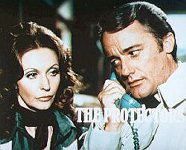
Harry
Rule (Robert Vaughn), Paul Buchet (Tony Anholt) and the Contessa
Caroline Ogilvie Di Contini (played by the late, wonderful actress
Nyree Dawn Porter) are one team in the
Protector organisation that acts outside the law to bring criminals
to justice.
This
was the first Group Three production.
The
powerful theme song, 'Avenues
and Alleyways' by Mitch Murray and Peter Callender was a chart
success for Tony Christie.
The memorable five note segue by Mitch Murray in the song was also
used consistently throughout the incidental music which was composed
by John Cameron.
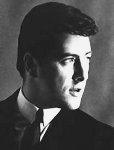
Mitch Murray = Songwriter who wrote and co-wrote many hits and
Number Ones in the 60s and Seventies
  
1972 - The Investigator
Starkits
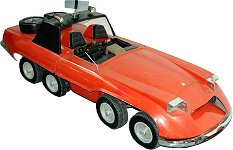  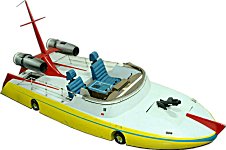
1 pilot episode x
25 mins Produced by Gerry Anderson
A
heard, but unseen being from another galaxy enlists the help
of two children, John and Julie, to help him in his crusade
against crime and
injustice on Earth. The two are miniaturised, to assist The
Investigator more easily, and are tasked with preventing the
theft of a 14th century
masterpiece from a church on Malta by Stavros Karanti. John
and Julie are equipped with a car and a boat, scaled to accommodate
their miniaturized size,
and sent out to thwart Karanti's plans. Some footage from 'The
Protectors' was used in this with Karanski aboard Countess di
Contini's yacht.
Not
transmitted. As in Secret Service, the miniaturisation of people
once again plays a major part in the special effects and storyline.


1975 - Space 1999
A Gerry Anderson /
Group Three production for ITC worldwide distribution

48 x 50 min episodes
in two seasons of 24 First transmitted: Thursday
4th September 1975
Created by Gerry
and Sylvia Anderson Executive Producer: Gerry
Anderson
Producer: season
1: Sylvia Anderson Producer: season 2: Fred Freiberger
Set
in the 1990's and the moon has been blasted out of orbit by the
accidental explosion of a radioactive waste dump, along with moonbase
Alpha and its 300
inhabitants commanded by John Koenig. This is the story of its
travels and the Alphans' search for a new home.
Martin
Landau and Barbara Bain star in this tale of human survival. Barry
Morse left after the first season and was replaced by a second female
lead - Maya,
a metamorph from the planet Psychon - played by Catherine Schell.
Work had already started on a second series of U.F.O. but as it
was not taken up by America,
production quickly changed to Space 1999. The company moved to the
old Hammer site at Bray studios for the special effects work.
To make the space vehicles fly more smoothly a technique was evolved
where the cameras were moved instead of the model, the background
being superimposed afterwards.


1975 - The Day After Tomorrow - Into Infinity
A Gerry Anderson / Group
Three production for the NBC network

1 episode x 52 mins
First transmission U.S.A. 9th December 1975 / U.K. 11th December
1976
Produced by
Gerry Anderson Prodn. Supervisor: F.Sherwin Green Directed
by Charles Cricton
The
lightship Altares which can travel at near lightspeed using a
photon drive carries two families, the Masters and the Bowens,
to Alpha Centauri on
an exploration mission. After being struck by a meteor shower,
the ship passes through a black hole into a new universe.
Starring
Brian Blessed, Joanna Dunham and Nick Tate, and narrated by Ed
Bishop, this production was made in 10 days during July 1975 at
Pinewood and Bray studios
using the cast and crew of Space 1999 between the first and second
series. The special effects took a further 6 weeks. Having the
appearance of a pilot episode it is, in fact,
one of a series of seven educational programmes commissioned by
NBC, each dealing with a different subject. This one was meant
to encompass Einstein's theory of relativity.
Never made into a series, it has been seen only once on U.K. television.

c.1976 - Intergalactic Rescue: Rescue 4
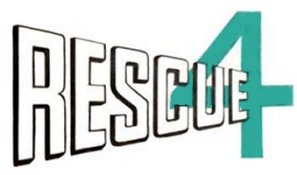 
Conceived by Gerry
Anderson and Fred Freiberger
Proposed pilot
and 13 x 30 minute episodes
This
was a proposed live-action version of the 'Thunderbirds' type, originally
titled 'RESCUE 4'. It was centred around an all-purpose rescue
vehicle,
patrolling a distant sector of space, manned by a crew of four plus
2 robots that seem to have been inspired by 'Silent Running'.
Presented to NBC as a potential 13 x 30 minute series, the option
of a pilot was not taken up.
The story itself has recently been made into a book - 'Stellar Patrol'.

c.1977 - Starcruiser
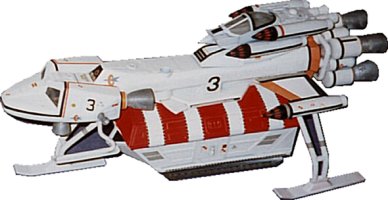

Created by Gerry Anderson and Fred Freiberger
Planned: 13
x 30 minute live action episodes - not taken up
- no pilot
- possibly similar in concept to 'Into Tomorrow'.
Although
never making it to the screen, the concept eventually materialised
in the form of a comic strip in the childrens TV magazine 'Look-In'

c.1977 - Ericsson Promo

A
promotional film for the Swedish telecomms giant Ericsson was
scripted by Gerry Anderson

1977 - Alien Attack

A Gerry Anderson-produced and directed cinema commercial, made to
promote Jif Dessert Toppings, used Supermarionation technology
and was scheduled to run before the main showing of the film Star
Wars. The puppets John and Julie were used from 'The Investigator'
and the otganisation
'Intergalactic Rescue' were used from the two previously unmade series
projects.
|
|
|
